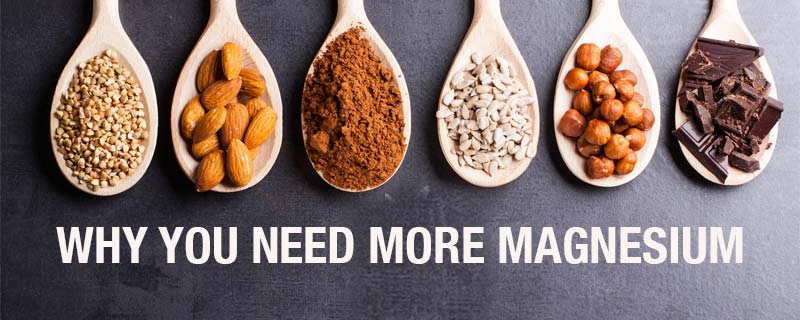If you haven’t been reaping the benefits of magnesium rich foods or supplements, then it’s time to start. Magnesium, believe it or not, is needed for over 300 biochemical reactions in the body. It’s the fourth most prevalent mineral in the body, half of it being stored in the bones and the other half in the body’s tissues and organs. Magnesium ensures that the heart beats normally and it keep bones healthy. It also supports healthy immune system function, proper blood sugar levels, healthy metabolism, and normal blood pressure. Have we convinced you of magnesium’s importance yet?
What Is Magnesium?
Magnesium is responsible for two primary cellular functions: energy production and cellular reproduction. It can help treat back pain and cramps, prevent constipation, reduce migraines, produce collagen, activate enzymes, and absorb minerals. This is because it essentially keeps your bodily levels normal. Because magnesium is a fundamental ion in the body, it is used in chemical reactions that occur in the cells. You may be thinking that magnesium isn’t necessary in your diet because you take supplements or certain prescriptions for hearth health, depression, anxiety, asthma, or even migraines. What separates magnesium from these medications is that it is an essential component of the body, therefore the body doesn’t treat it as a foreign substance. While magnesium helps a number of ailments, medications usually treat one specific symptom and are flushed out as toxins, which tax the liver and kidneys.
When a person is not deficient in magnesium and gets a consistent supply, the body stores it for future use. This is what you want because magnesium boosts hormone production, maintains cells, and creates energy. If the body does not get enough magnesium it begins extracting magnesium from bones, where it is needed. Low magnesium levels have been linked to diabetes, osteoporosis, high blood pressure, and even asthma. These are the extremes, but symptoms of magnesium deficiency include irregular heart beat, fatigue, tremors, or cramps.
How Can You Add More Magnesium To Your Diet?
Magnesium is in more foods than you think. Magnesium is naturally found in sea vegetables, dark leafy greens such as spinach, tomatoes, beet greens, broad beans, lima beans, artichokes, sweet potatoes, pumpkin seeds, barley, cornmeal, buckwheat flour, oat bran, and peanuts. Drinking lots of distilled or alkaline water is also a beneficial source of magnesium.
You know what else you can do to fulfill your daily dose of magnesium? You can make your own magnesium oil! You’ll need a half cup of magnesium chloride flakes, a half cup of distilled water, and a spray bottle. Bring the distilled water to a boil, stir in the magnesium chloride flakes until dissolved, and let the solution cool. Pour this in a spray bottle and apply to your stomach, legs, and arms daily. Use this oil in combination with eating foods that are rich in magnesium and your body will be grateful.















